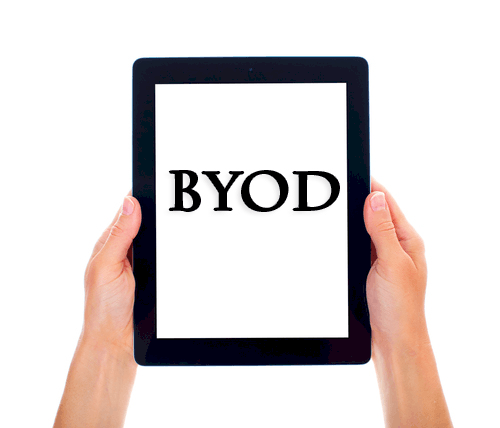
Information Governance in The Age of BYOD

The consumerization of IT has served many chief information officers (CIOs) and other corporate decision-makers with a variety of challenges, as any new technology entering the enterprise will. However, while IT departments and CIOs would traditionally have a direct say in the devices used to carry out business operations, the bring your own device (BYOD) trend has transformed many responsibilities.
On top of the difficulties experienced when trying to secure and support dozens of different devices and operating systems, taking the right precautions to ensure eDiscovery immunization can be nearly impossible for the average IT department. Still, with the right type of outsourced litigation support team, these tasks can be made much more possible.
Next step, spinning rims;
The average mobile device has gone from its early grandeur at a three-pound brick, to something that Spielberg couldn’t have drawn up even in the 90s. While each new smartphone or tablet seems to one-up the last, consumers, also known as employees, are quick to purchase and use only the most advanced and flashy devices.
Not to say that each doesn’t come with some impressive upgrades to capabilities, but new devices pose new security and information governance issues to businesses. InfoSec Island recently reported that the costs associated with BYOD have increased at a rapid pace, with one survey revealing that the average number of devices used by each worker will grow from 2.8 this year to 3.3 by 2014.
While the news provider noted that the overwhelming majority of respondents to two separate surveys said that BYOD was a big boost to their companies, most also cited the challenges regarding information governance. The source cited Gartner Research, which recommended all businesses use a comprehensive and targeted mixture of infrastructure controls, mobile device management, mobile application management, IT support and stringent policies to reduce the risks of incurring much higher costs or losses derived from shoddy use of personal devices.
Don’t tell me what to do, Dad;
While many CIOs might feel that the best way to approach BYOD is like a father at the dinner table, dictating which devices and apps are gravy and which are not, this isn’t necessarily the best method. Many studies have shown that workers will use their personal devices for enterprise functions with or without BYOD policies in place, making it the company’s responsibility to create, deploy and enforce information governance policies.
Being as proactive as possible is more important with BYOD than most other movements, as the room for loss is too great when a business has hundreds of unique devices, all of which hosting corporate data. Through tight information governance policies and support from an information governance service provider, businesses can avoid incurring issues stemming from mobile device eDiscovery meltdowns.
Sources:
https://www.infosecisland.com/blogview/22366-BYOD-Costs-are-Rising.html?utm_source=dlvr.it&utm_medium=twitter”
